Why Are Some Binoculars So Expensive?
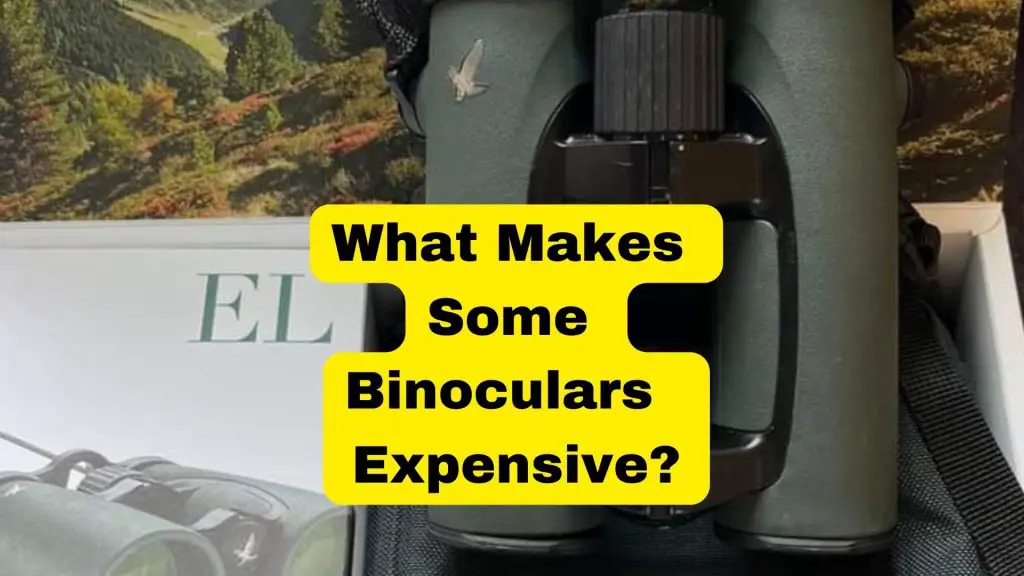
Contrary to the assumption that massive binoculars are more expensive, it is not uncommon for smaller, portable models to command a higher price tag.
The price of binoculars can vary due to numerous factors, encompassing the manufacturer’s approach to production, glass quality, precision, collimation, and body armor.
While the cost generally aligns with the overall quality, exceptions to this rule are not uncommon.
Hence, the price of binoculars can be influenced by a multitude of factors, making some models considerably more expensive than others.
Why Some Binoculars Are So Expensive
Let’s discuss each of the factors that create a difference between cheap and expensive binoculars quickly:
Optical Components and Technology
The optical components and technology of binoculars play a crucial role in determining their performance, clarity, and overall quality.
Quality of Lenses and Coatings:
The lenses are the heart of any binocular, and their quality directly impacts the clarity and sharpness of the images.
Expensive binoculars often feature premium glass, such as HD-Glass (HD) or extra-low dispersion (ED) glass, which reduces chromatic aberrations and enhances color fidelity.
These high-quality lenses are manufactured with precision and strict quality control measures to ensure superior optical performance.
Additionally, expensive binoculars come with advanced lens coatings.
Multiple coatings, like anti-reflective coatings, phase correction coatings, and dielectric coatings, are applied to the lenses to reduce glare, increase light transmission, and improve contrast.
These coatings not only enhance image brightness and clarity but also protect the lenses from scratches and other damage.
Some examples of lens multi-coatings found in premium binoculars include Zeiss’s T* Coating, Steiner’s Diamond-night, Swarovski’s SWAROTOP, and Celestron’s StarBright XLT.
In addition to these coatings, high-end binoculars also incorporate water and dirt-repellent coatings like AquaDura, RainGuard HD, Nano-Protection, SWARODUR, and SWAROCLEAN.
These coatings are designed to protect the lenses from external fogging and dirt.
They are highly effective in preventing water droplets from forming on the lens surface, which in turn prevents dirt from adhering to the glass.
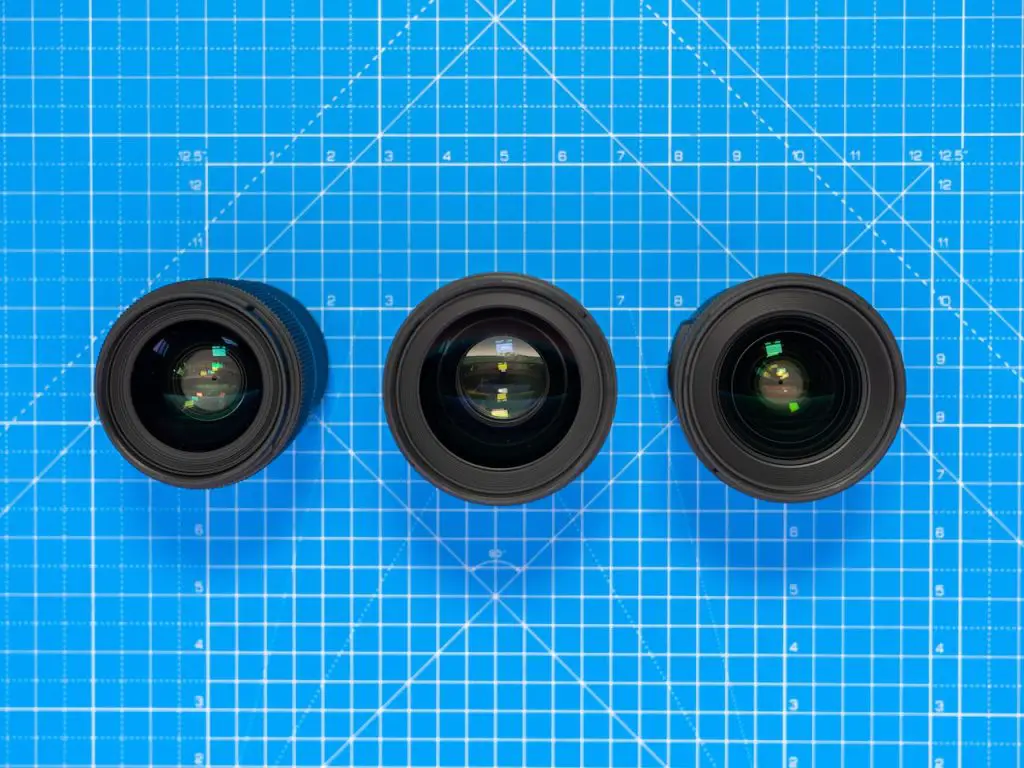
Prism Systems: Roof Prism vs. Porro Prism:
Binoculars typically use either roof prism or Porro prism systems to invert and revert the image, allowing you to view objects correctly.
Roof prism binoculars are more compact and have a straight-barrel design, while Porro prism binoculars have an offset-barrel design that offers better depth perception.
Expensive binoculars often incorporate roof prism systems, specifically the Schmidt-Pechan and Abbe-Koenig prisms.
These prisms are more complex to manufacture and require higher precision, resulting in better light transmission and image clarity.
Porro prism binoculars can also be high-quality, but they are generally less expensive due to simpler construction.
Schmidt-Pechan Roof prisms to Abbe-Koenig prisms
In recent years, certain manufacturers have opted to switch from Schmidt-Pechan roof prisms to Abbe-Koenig prisms due to the latter’s superior light transmittance.
Abbe-Koenig prisms are more intricate than conventional roof prisms, necessitating precise production methods for accurate angle measurements.
As a consequence, binoculars featuring Abbe-Koenig prisms command a significantly higher price compared to those with alternative prism configurations.
Phase-Coated and Dielectric-Coated Prisms:
Within roof prism binoculars, phase-coated and dielectric-coated prisms are two additional features that impact pricing.
Phase coatings correct the phase shift in light rays passing through the prisms, ensuring better image resolution and contrast.
Dielectric coatings, on the other hand, increase reflectivity to nearly 99%, resulting in improved light transmission and overall brightness.
The implementation of these specialized coatings in expensive binoculars elevates their optical performance, particularly in challenging lighting conditions and distant viewing scenarios.
Field Flattener and Aberration Control:
One of the challenges in binocular design is reducing optical aberrations, such as spherical and chromatic aberrations.
Expensive binocular manufacturers such as Zeiss Victory SF and the Swarovski Swarovision series (8.5X42 EL Series), often incorporate field flatteners, which help maintain image sharpness and clarity across the entire field of view.
This ensures that objects remain crisp and distortion-free, even at the periphery of the viewing area.
Sophisticated aberration control techniques, such as aspherical lens elements and apochromatic lens designs, are also used in high-end binoculars to correct for various optical aberrations, further improving image quality.
Impact of Advanced Optical Technology on Pricing:
The incorporation of advanced optical components and technology undoubtedly drives up the cost of binoculars.
Manufacturers invest heavily in research and development to engineer these cutting-edge features and ensure top-notch performance.
Moreover, the use of premium materials, complex manufacturing processes, and stringent quality control adds to the overall production costs.
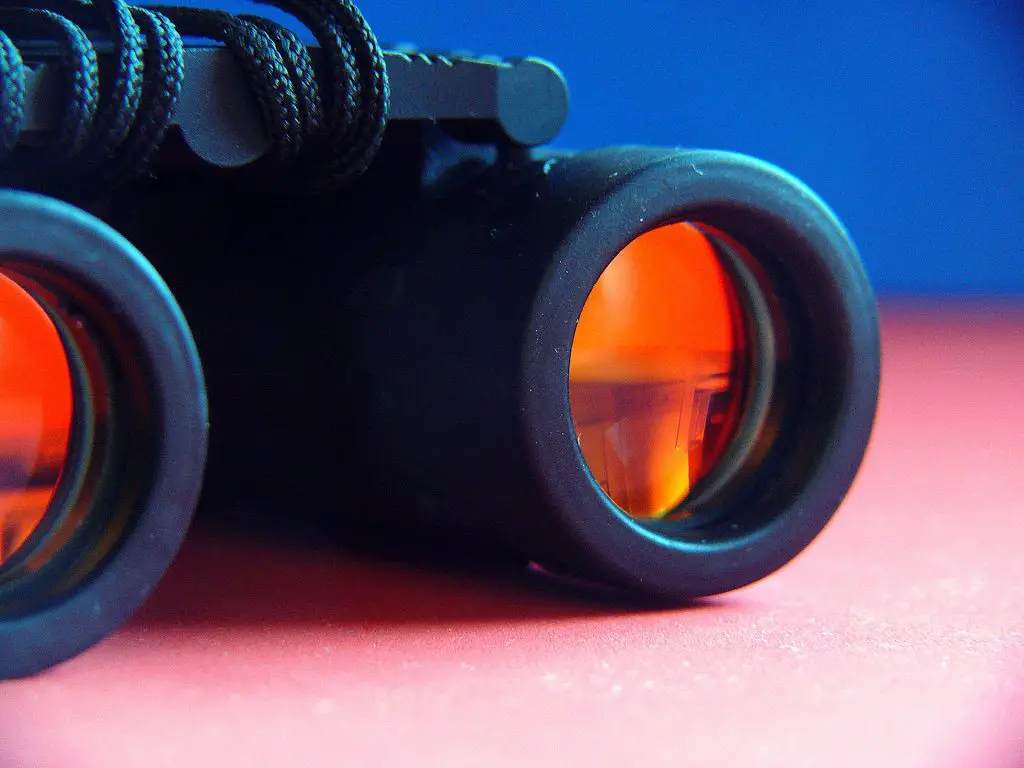
Construction and Material Quality
When it comes to binoculars, the old adage “You get what you pay for” holds true.
Expensive binoculars are often characterized by their superior construction and material quality, which contribute to their durability, performance, and overall user experience.
Durable and Lightweight Materials:
Manufacturers of expensive binoculars prioritize the use of high-quality materials to ensure robustness and longevity.
Premium binoculars often feature magnesium alloy or aircraft-grade aluminum housings, which provide an ideal balance of strength and lightness.
These materials offer exceptional protection to the internal optical components, making the binoculars resistant to impact, shocks, and rough handling during outdoor adventures.
The careful selection of materials not only enhances the binoculars’ ability to withstand rugged conditions but also contributes to the overall weight reduction, making them more comfortable to carry for extended periods.
Waterproofing and Fog-proofing Features:
Expensive binoculars are designed to withstand the elements, making them suitable for various outdoor activities, including birdwatching, hunting, and marine use.
One of the key features found in mid-range to premium binoculars is their waterproofing capability.
They are sealed with O-rings to prevent moisture from entering the internal components, thus protecting the lenses and prisms from fogging up and internal damage due to water exposure.
Additionally, premium binoculars are nitrogen or argon-purged, creating a dry internal environment that prevents internal fogging, especially when transitioning between temperature extremes.
This fog-proofing feature ensures that the binoculars remain clear and functional even in humid or wet conditions.
Ergonomic Design and Premium Craftsmanship:
Expensive binoculars often boast an ergonomic design that prioritizes user comfort and ease of use.
Manufacturers invest considerable effort in crafting binoculars that fit comfortably in the hand, with well-designed grip patterns and intuitive control placements.
The focus knob and diopter adjustments on premium binoculars like the vortex razor and viper HD are precisely engineered for smooth and accurate operation, allowing users to quickly and easily fine-tune their focus.
Moreover, high-end binoculars like may feature retractable eyecups with multiple positions, accommodating users with or without eyeglasses.
Craftsmanship is another hallmark of expensive binoculars.
These binoculars are meticulously assembled and undergo rigorous quality control checks to ensure every unit meets the highest standards of precision and performance.
Focus System
A feature that contributes to higher costs in binoculars is the individual focus mechanism, which enables each barrel of the binoculars to be adjusted independently for focus, regardless of each other.
When both barrels are correctly focused, users can use the binoculars without the need for wearing eyeglasses.
The individual focus (IF) system requires meticulous precision and alignment, making binoculars with this feature relatively more expensive than those with a central focus system.
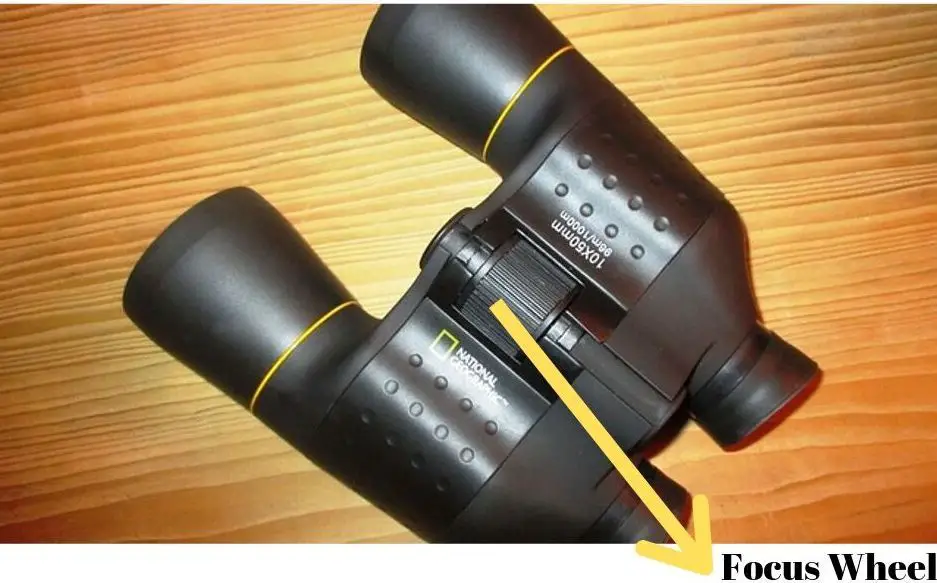
Close Focus
The close focus distance refers to the minimum distance at which binoculars can focus on objects clearly.
Binoculars with lower close focus capabilities cater to specific niche markets, such as birdwatchers and nature enthusiasts who want to study flora and fauna up close.
As a result, manufacturers may price these specialized binoculars higher due to their targeted appeal and limited demand.
For Example, High-end binoculars like the Swarovski EL 10×42 binoculars are known for their exceptional close-focus capabilities.
These binoculars incorporate advanced optical design, precision engineering, and specialized coatings to achieve their lower close focus, making them relatively more expensive than standard binocular models.
Longer Eye Relief
Longer eye relief is an essential consideration for binoculars, especially for those who wear eyeglasses. In the past, binoculars were designed with the observer’s eyes close to the eyepiece to ensure optimal viewing.
However, this created a problem for eyeglass wearers, as their glasses would obstruct the view, causing a vignette effect around the observed object.
To address this issue, modern binoculars now incorporate specialized eyepieces with multiple ocular lenses.
These lenses work together to significantly increase the eye relief, allowing eyeglass wearers to use binoculars without experiencing cropped or obstructed views.
The extended eye relief comes at a higher cost, making binoculars with this feature more expensive.
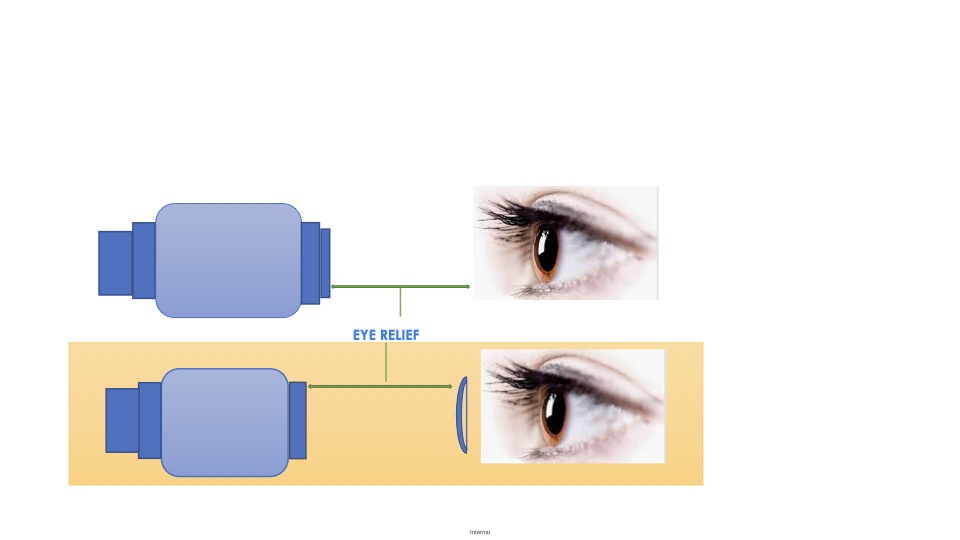
Retractable eyecups in binoculars
Retractable eyecups in binoculars refer to the adjustable rings or cups surrounding the eyepiece lenses.
These eyecups can be extended or retracted to accommodate different users’ needs, particularly those who wear eyeglasses or those who prefer to use binoculars without eyeglasses.
For eyeglass wearers, the eyecups can be fully retracted, allowing them to position their eyes closer to the lenses and maintain the correct eye relief distance.
This prevents the edges of the eyeglasses from obstructing the view and ensures a comfortable viewing experience without any loss of the field of view.
For non-eyeglass wearers, the eyecups can be extended, providing a comfortable cushioning against the face and helping to align the eyes properly with the binoculars’ optics.
This added extension also helps stabilize the binoculars during observation, especially for long-duration use or when precise focusing is required.
The ability to retract or extend the eyecups is typically achieved through a twist-up or snap-up mechanism.
With the twist-up eyecups, users can adjust the eyecups by twisting them in a clockwise or counterclockwise direction.
Snap-up eyecups, on the other hand, can be moved into position with a gentle snap into place.
Retractable eyecups add versatility and convenience to binoculars, allowing them to cater to different users’ preferences and ensuring a comfortable and immersive viewing experience for everyone.
Incorporating adjustable eyecups that guarantee long-lasting durability, contributes to the overall cost of these premium binoculars.
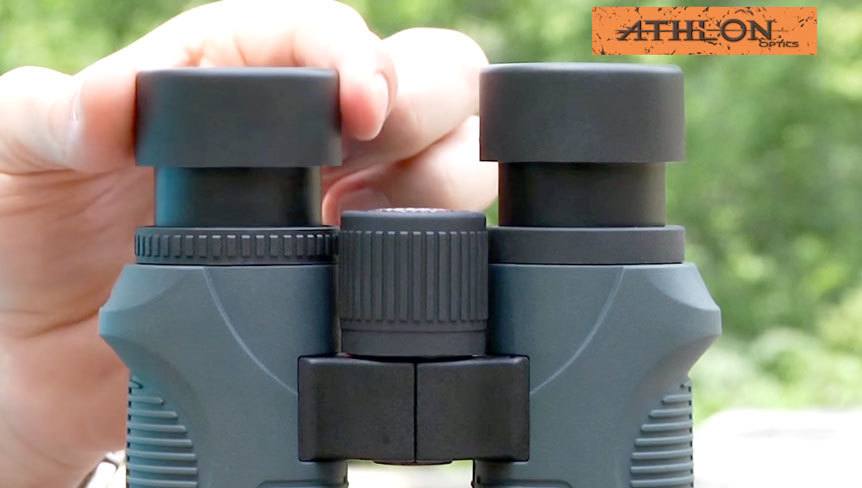
Longevity and Performance Advantages of High-Quality Construction:
The superior construction and material quality of expensive binoculars contribute to their longevity and reliability.
Unlike cheaper alternatives, which may require frequent repairs or replacements, premium binoculars are built to withstand years of heavy use without compromising their optical performance.
Additionally, the robust construction of high-end binoculars ensures consistent optical alignment, which is critical for maintaining image quality and reducing eye strain during extended use.
Quality Of Accessories Provided Can Make Binoculars Expensive
When comparing low-cost or cheap binoculars to their more expensive counterparts, one of the noticeable distinctions lies in the quality of the extras and accessories provided with the binoculars.
High-end and even mid-level binoculars typically come with a range of premium accessories that enhance the overall user experience and offer added protection for the investment.
Packaging:
Expensive binoculars often come in high-quality, durable packaging that not only serves as protection during shipping but also provides a secure storage solution when not in use.
The packaging is designed to safeguard the binoculars and their accessories from potential damage.
Carry Case:
Premium binoculars are usually accompanied by a well-designed and durable carry case. These cases may feature padded interiors, weather-resistant materials, and additional pockets for storing accessories.
They are not only practical for transporting the binoculars but also offer excellent protection against dust, moisture, and minor impacts.
Neck Strap:
High-quality binoculars are typically equipped with a comfortable and adjustable neck strap.
These straps are ergonomically designed to distribute the weight of the binoculars evenly, ensuring prolonged use without discomfort or strain.
Lens Covers and Rain Guard:
Expensive binoculars often include high-quality lens covers that provide excellent protection for the objective lenses and eyepieces when not in use.
Additionally, a rain guard is often provided to shield the eyepieces from moisture and raindrops, ensuring clear and unobstructed views even in adverse weather conditions.
Cleaning Cloth:
Included with premium binoculars is a premium-grade cleaning cloth.
This cloth is designed specifically for delicate optics, ensuring safe and effective cleaning without scratching or damaging the lenses.
Bino Harness:
In some cases, high-end binoculars may come with a bino harness.
A harness is an advanced carrying solution that distributes the weight of the binoculars evenly across the shoulders, providing maximum comfort and convenience during extended use.
Example: Swarovski EL Range binoculars, a top-tier model known for its optical excellence, comes with premium extras and accessories.
The packaging is sturdy and protective, ensuring the binoculars arrive in perfect condition.
The included carry case is made of durable materials, and the neck strap is comfortable and adjustable.
Swarovski also provides high-quality lens covers and a rain guard to protect the optics, as well as a specially designed cleaning cloth to maintain optical clarity.
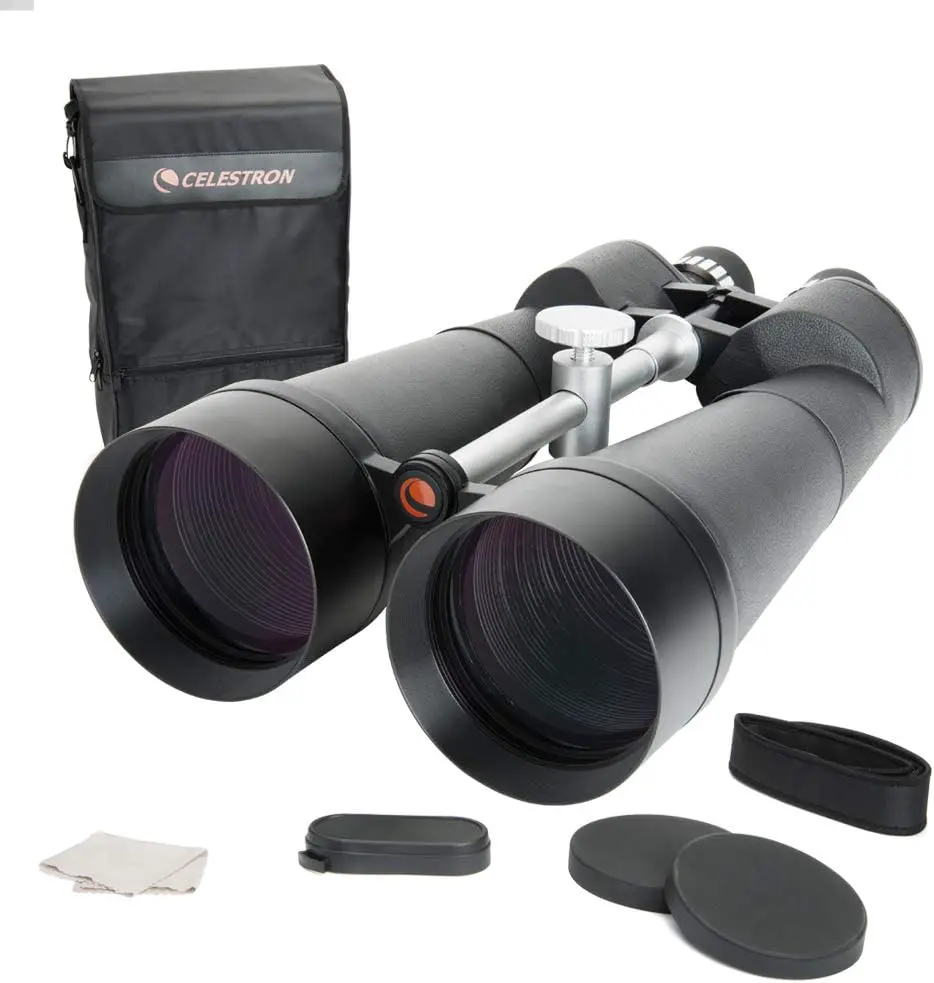
Brand Reputation and Research & Development
When shopping for binoculars, it’s not uncommon to notice significant price variations between different brands and models.
One of the key factors influencing these price disparities is the brand reputation and the level of investment in research and development (R&D) for innovations.
Influence of Established Brands on Pricing:
Established brands with a long-standing reputation in the optics industry often command higher prices for their binoculars.
Consumers associate these brands with reliability, performance, and quality, leading to a perceived value that justifies the premium price point.
Companies such as Leica, Zeiss, and Swarovski, Vortex which have been producing optical instruments for decades have accumulated expertise and refined their manufacturing processes, resulting in products that are often regarded as top-tier choices.
Moreover, the strong presence of established brands in the market creates a sense of trust and assurance among consumers.
The demand for binoculars from reputable brands leads to a higher price tag, reflecting the brand’s market standing and legacy.
Quality Control and Consistency:
Established brands maintain strict quality control measures to ensure the consistency and precision of their binoculars.
Each unit is thoroughly inspected and tested during production to meet stringent specifications. The commitment to quality control guarantees that every binocular leaving the factory adheres to the brand’s reputation for excellence.
Such precision and consistency in manufacturing increase the overall manufacturing costs, contributing to the higher price of premium binoculars.
However, this investment in quality control reassures consumers that they are acquiring a product that meets the highest standards.
Interesting Read: Why Do Binoculars Make Me Dizzy
Low-Light and Twilight Performance Enhancements:
Expensive binoculars are designed to excel in low-light and twilight conditions, making them ideal for activities like wildlife observation, stargazing, and astronomy. Several features contribute to their superior performance in challenging lighting situations:
- Large Exit Pupil: As mentioned earlier, the larger exit pupil created by the larger aperture allows more light to reach the viewer’s eyes, making the image brighter and more visible in low-light conditions.
- High Twilight Factor: The twilight factor is a calculated value that considers both the aperture and magnification of the binoculars. Higher twilight factor values indicate better low-light performance.
- Low Dispersion Glass: ED or HD glass reduces color fringing, which can be particularly noticeable in low-light conditions.
- Fully Multi-Coated Lenses: Advanced lens coatings maximize light transmission, ensuring the binoculars perform well even in dim lighting.
Also: Exit Pupil Vs Twilight Factor
Specialized Features and Functionality
Binoculars have evolved significantly over the years, and modern technology has paved the way for specialized features and functionalities that cater to specific needs and applications.
Expensive binoculars often boast advanced features that push the boundaries of traditional optics, making them indispensable tools for professionals and enthusiasts alike.
Let’s discuss these below:
Image Stabilization Technology:
Image stabilization (IS) technology is a groundbreaking feature that has revolutionized the world of binoculars.
This technology utilizes gyroscopes or motion sensors to compensate for hand tremors and vibrations, providing a stable view even at higher magnifications.
IS technology significantly reduces image shake, making it easier to observe distant objects with clarity and steadiness.
While image stabilization is a remarkable innovation, it adds to the overall cost of binoculars.
The precise engineering and integration of IS mechanisms, along with the inclusion of power-consuming components like batteries, contribute to the higher price of binoculars with this feature.
Nonetheless, for applications such as birdwatching, marine use, and long-range observation, image stabilization proves to be invaluable.
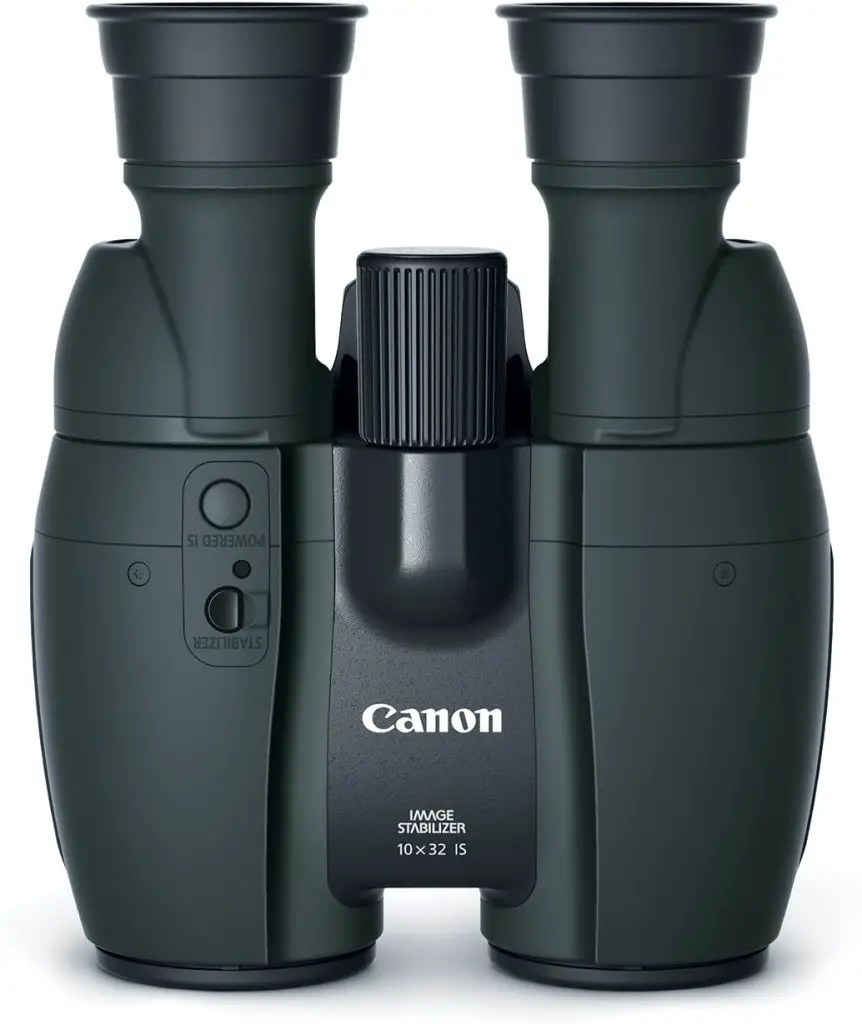
Rangefinder Integration:
Rangefinder-integrated binoculars combine the capabilities of a binocular and a laser rangefinder into a single device.
This feature allows users to measure the distance to a target accurately. It is particularly valuable for hunting, golfing, and outdoor activities that require precise distance readings.
The inclusion of a laser rangefinder in binoculars adds to the complexity of the device, increasing both the production costs and the final price.
However, for users who depend on accurate distance measurements in their activities, rangefinder-integrated binoculars provide unmatched convenience and efficiency.
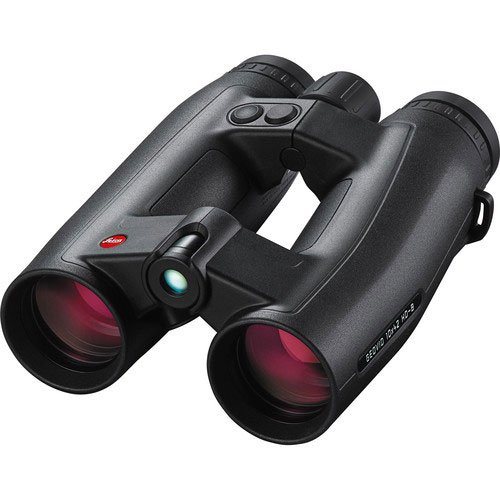
Night Vision and Thermal Imaging Capabilities:
Night vision and thermal imaging binoculars cater to applications where observation is required in low-light or complete darkness.
These specialized binoculars use image intensifier tubes or thermal sensors to detect heat signatures and provide enhanced visibility in the dark.
The technology behind night vision and thermal imaging is complex and expensive, making these binoculars considerably more costly than standard daytime optics.
However, for military, law enforcement, surveillance, and wildlife observation purposes, these features are indispensable, as they offer a distinct advantage in challenging lighting conditions.
Binoculars With Integrated Compass
Navigating in deep waters without landmark references can be challenging, which is why skippers rely on a compass for assistance.
Many marine binoculars are equipped with a waterproof compass feature, allowing ship and boat voyagers to measure the clockwise angle between the North and observed landmark objects from their vessel.
This compass information helps approximate the position of the vessel in the sea, aiding in safe navigation.
One example of binoculars with this waterproof compass feature is the Steiner Commander Global series, designed specifically for maritime professionals and experienced sailors.
The integration of a waterproof compass into binoculars adds to their overall cost due to advanced engineering, precise calibration, and waterproofing requirements.
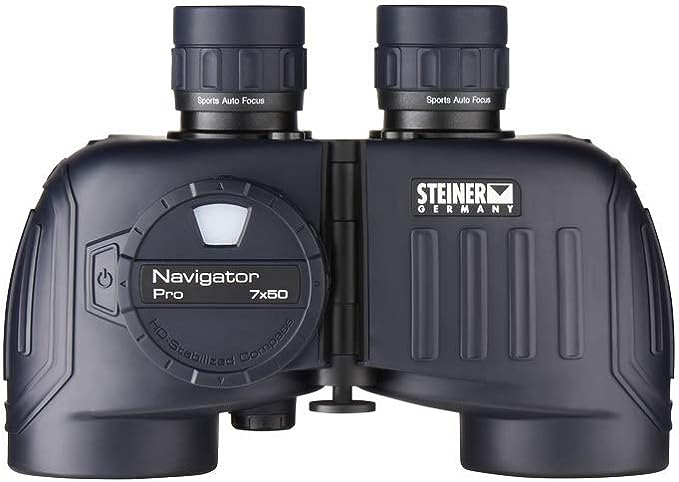
Country Of Manufacture and Design
The country of manufacture can have a significant impact on the price of binoculars due to various factors, including labor costs, production standards, quality control, and brand reputation.
Different countries have distinct manufacturing capabilities and cost structures, which influence the overall pricing of binoculars.
Developed Countries with Higher Labor Costs:
Binoculars manufactured in developed countries with higher labor costs tend to be more expensive.
These countries often have strict labor regulations and higher wages for workers, contributing to increased production expenses.
Consequently, the higher manufacturing costs are reflected in the final price of the binoculars.
Example:
Binoculars made in countries like Germany, Japan, and the United States are often associated with premium quality due to their advanced technology, rigorous quality control, and skilled craftsmanship.
Brands like Leica, Nikon, and Zeiss, known for their high-end optics, manufacture some of their binoculars in these countries, which contribute to their higher price tags.
Developing Countries with Lower Labor Costs:
On the other hand, binoculars manufactured in developing countries with lower labor costs tend to be more budget-friendly.
These countries often offer cost-effective labor, which can result in more affordable production and, consequently, lower retail prices.
Example:
Some binoculars are made in countries like China, Philippines, or Vietnam, where labor costs are relatively lower compared to developed countries.
As a result, brands like Celestron and Vortex often manufacture certain binocular models in these countries, allowing them to offer competitive pricing without compromising on quality.
Brand Reputation and Perception Related To The Country Of Make:
The country of manufacture can also influence the perceived quality and reputation of binoculars.
Some consumers associate certain countries with better craftsmanship and reliability, leading to a higher willingness to pay a premium price for binoculars made in those countries.
Example:
Swarovski is a renowned Austrian brand known for producing high-quality optics.
The “Made in Austria” label on their binoculars often adds to the perception of superior craftsmanship and precision, justifying the higher price.
Cost of Materials and Components:
Apart from labor costs, the country of manufacture can impact the cost of materials and components used in binocular production.
Some countries may have access to specialized materials or technologies that influence the overall cost of manufacturing.
Example:
Japanese manufacturers like Nikon and Canon have a strong presence in the optics industry and may have access to cutting-edge optical materials and coatings, which can affect the cost of production and contribute to the higher price of their binoculars.
Related Read: German Made Binoculars, USA Made Binoculars
Competition and Pricing Strategy
The market for binoculars is diverse, with products ranging from budget-friendly options to high-end, expensive models.
Competing brands need to navigate this pricing landscape strategically to appeal to different segments of consumers.
Pricing is a critical aspect of this competition, and manufacturers employ different strategies to position their products and cater to consumer preferences.
Analyzing the competitive pricing landscape involves understanding the different price points at which binoculars are offered.
Manufacturers must consider factors such as the target audience, features, performance, and brand reputation when setting their prices.
Remember The Law Of Diminishing Returns Before Investing
In the world of binoculars, the law of diminishing returns applies, meaning that as you move up the price range, the incremental improvements become smaller and smaller.
Consider the comparison between an average binocular priced at around $30 – $60 and a higher-end one around $100 to 200.
Generally, the more expensive pair will exhibit better build quality and use superior materials, offering a noticeable improvement over the lower-priced option.
However, as you continue to climb the price ladder, the differences in performance become less significant. For instance, a premium binocular priced at $2000 is unlikely to be twice as good as a high-end model costing $1000.
The improvements at this higher price point are more subtle and might not justify the substantial increase in cost.
Comparsion Table
| Factor | Cheap Binoculars ($30-$50) | Low Range Binoculars ($50-$150) | Medium Range Binoculars ($150-$600) | High-End Premium Binoculars ($1000+) |
|---|---|---|---|---|
| Optical Components & Technology | Basic lenses, minimal coatings | Better quality lenses with some coatings | High-quality lenses with multiple coatings | Premium glass (HD, ED), advanced coatings |
| Construction & Material Quality | Plastic or low-grade materials | Better build quality, some weatherproofing | Magnesium alloy or aluminum, waterproof & fog-proof | Premium materials, advanced weatherproofing |
| Brand Reputation & R&D | Unknown or lesser-known brands | Established brands with R&D investment | Well-known brands, some R&D | Top-tier brands, significant R&D investment |
| Advanced Optical Technology | No special features | Some may have basic stabilization | Image stabilization, rangefinder integration | Image stabilization, night vision, thermal imaging |
| Close Focus Distance | Average close focus | Better close focus capability | Enhanced close focus capability | Specialized close focus for specific purposes |
| Longer Eye Relief | Average eye relief | Improved eye relief for eyeglass wearers | Longer eye relief for comfort | Extended eye relief for eyeglass wearers |
| Retractable Eyecups | Not always present | May have basic retractable eyecups | Multiple positions for eyeglass & non-eyeglass wearers | Multiple positions, high-quality eyecups |
| Quality of Accessories | Basic accessories | Better quality accessories included | Durable and well-designed accessories | Premium, protective accessories included |
| Country of Manufacture | May be from developing countries | Mixed, but may include developing countries | Mixed, may include developed and developing countries | Developed countries like Austria, Germany, USA with higher labor costs |
Again, please keep in mind that the price ranges and features can vary based on specific models and brands within each category.
The prices mentioned here are approximate and represent a general pricing trend for each category of binoculars.
Check Binoculars In Your Budget:
Best Binoculars Under $300 & 400
Best Binoculars Under 500 & 600 Dollar – Top 6 Picks Of 2023
Conclusion: Positioning of Expensive Binoculars in the Market:
Expensive binoculars occupy a specific niche in the market, targeting discerning enthusiasts, professionals, and individuals who prioritize optical excellence and advanced features.
These binoculars are positioned as top-of-the-line products, offering cutting-edge technology, superior performance, and durability.
To justify the higher prices, manufacturers emphasize the premium materials, advanced optics, specialized features, and rigorous quality control that go into producing these binoculars.
Brand reputation also plays a crucial role in positioning expensive binoculars as consumers often associate well-established brands with quality and reliability.
Manufacturers often promote their expensive binoculars as investments, emphasizing the long-lasting performance and unparalleled optical experiences they offer.
By positioning these binoculars as premium products with unique value propositions, manufacturers appeal to consumers who seek uncompromising quality and are willing to pay a premium for it.
